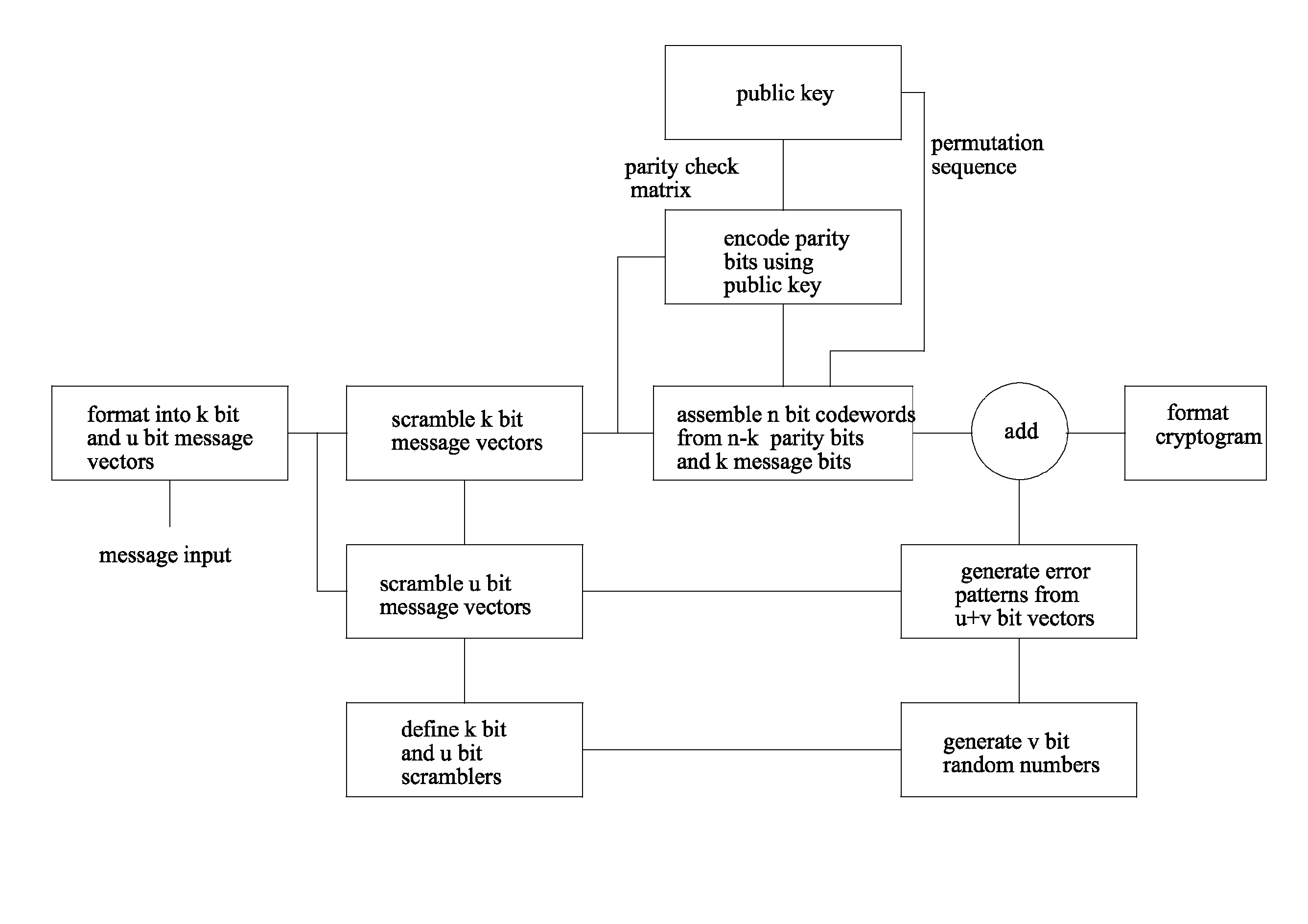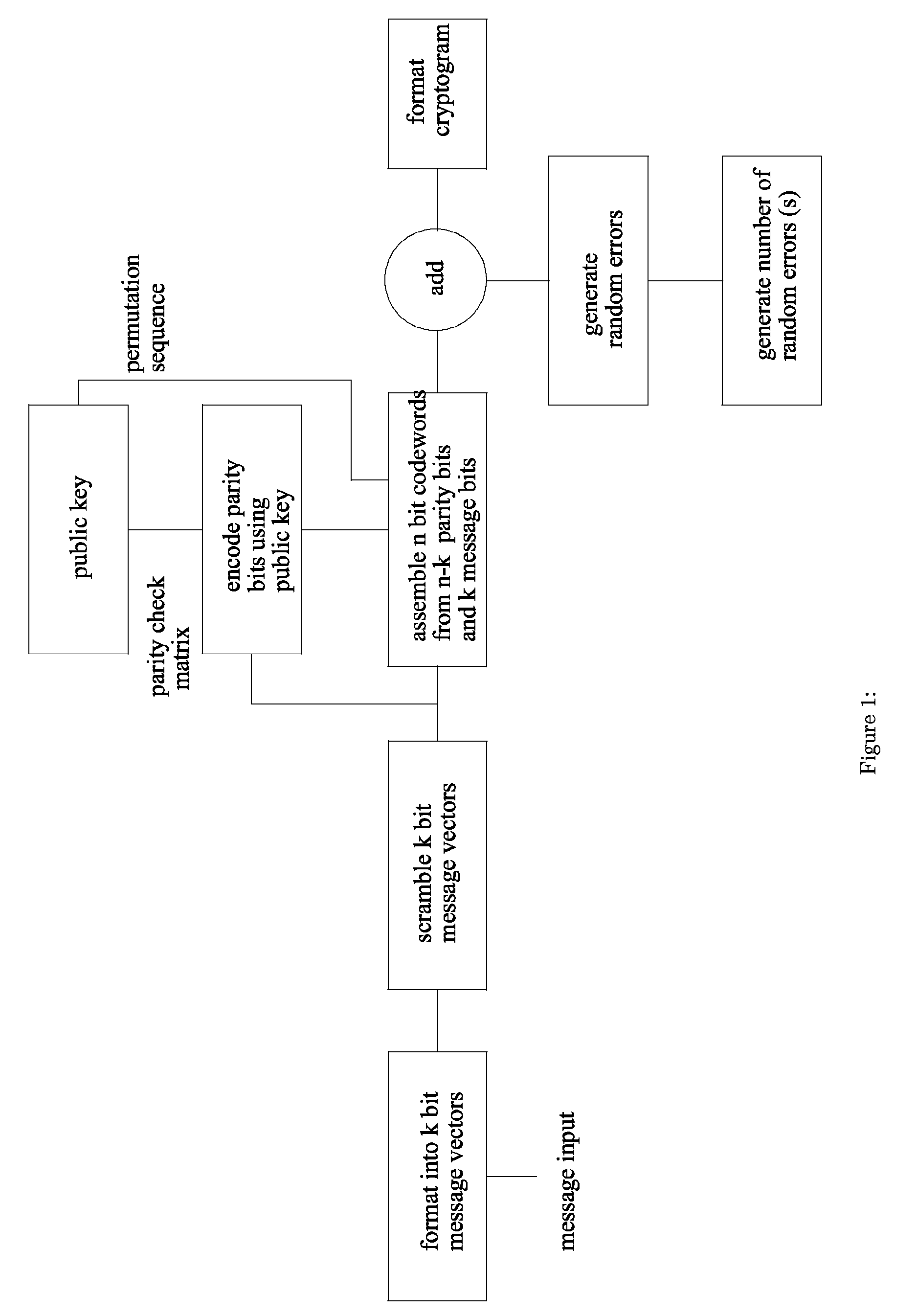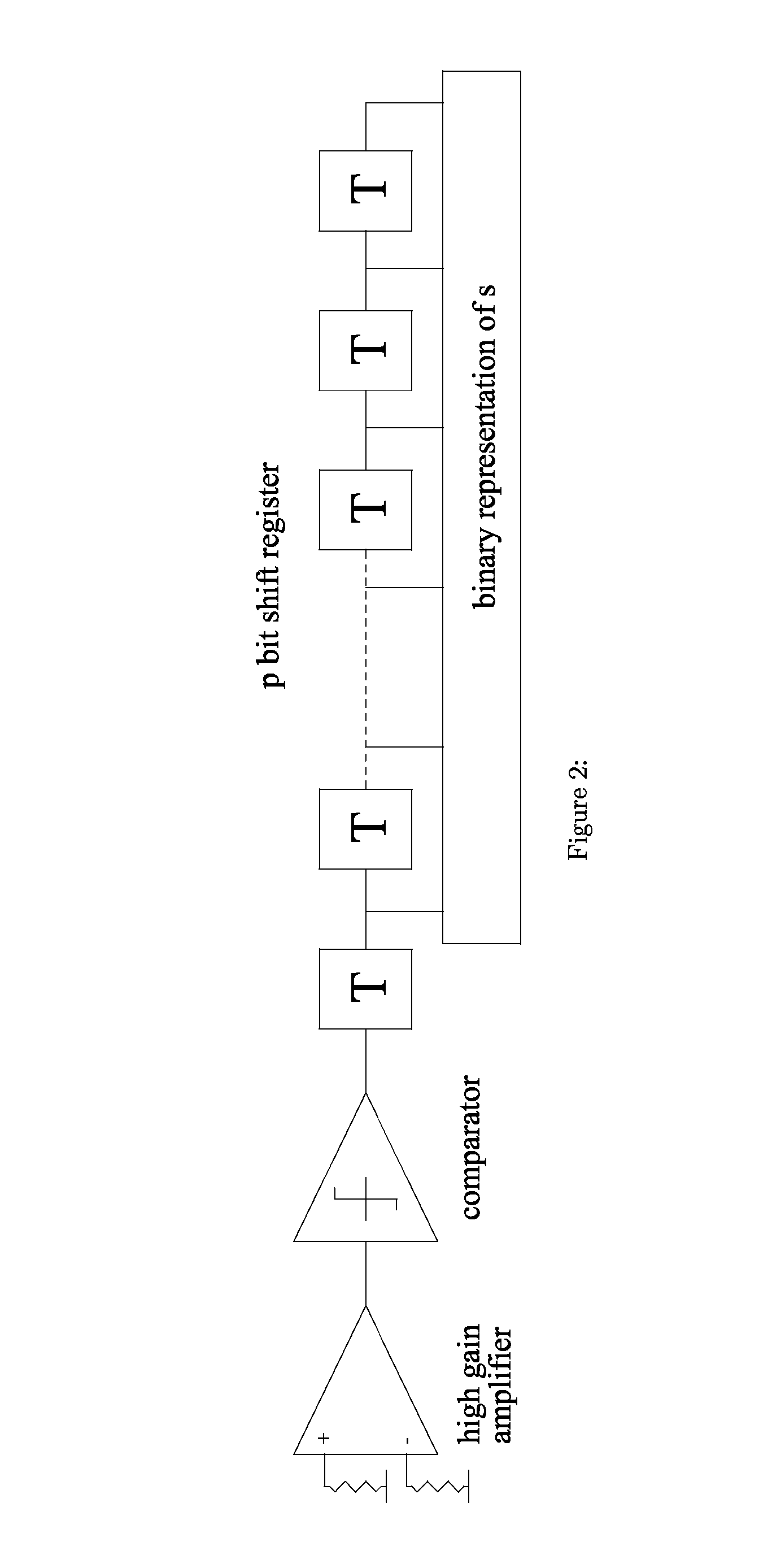Public key encryption system using error correcting codes
a public key and error correction technology, applied in the field of public key encryption system using error correction codes, can solve the problems of large public key size, compromised system security, etc., and achieve the effect of improving the information throughput efficiency of the public key encryption system
- Summary
- Abstract
- Description
- Claims
- Application Information
AI Technical Summary
Benefits of technology
Problems solved by technology
Method used
Image
Examples
Embodiment Construction
[0038]The security strength of most embodiments of the invention as in the original McEliece public Key encryption system stems from the fact that a truly random binary error pattern is added to the encoded message as part of the digital cryptogram. Even with the same message and the same public key a different digital cryptogram is produced each time the message is encrypted. Each message is encoded with a scrambled, binary mapped, permuted, version of a GF(2m) Goppa code. Without the knowledge of the particular Goppa code that is used, the error patterns cannot be corrected and the messages cannot be recovered. It is not possible to deduce which particular Goppa code is being used from the public key, which is the matrix used for encoding, because this matrix is a scrambled, permuted version of the original encoding matrix of the Goppa code, plus the fact that for a given m there are an extremely large number of Goppa codes [2].
[0039]The method of encryption in one embodiment of t...
PUM
 Login to View More
Login to View More Abstract
Description
Claims
Application Information
 Login to View More
Login to View More - R&D
- Intellectual Property
- Life Sciences
- Materials
- Tech Scout
- Unparalleled Data Quality
- Higher Quality Content
- 60% Fewer Hallucinations
Browse by: Latest US Patents, China's latest patents, Technical Efficacy Thesaurus, Application Domain, Technology Topic, Popular Technical Reports.
© 2025 PatSnap. All rights reserved.Legal|Privacy policy|Modern Slavery Act Transparency Statement|Sitemap|About US| Contact US: help@patsnap.com



